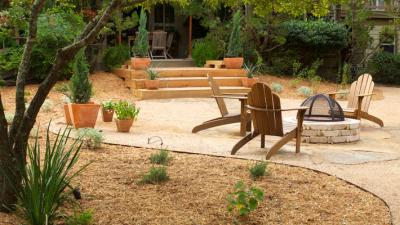With prolonged drought and shallow, poor-quality soils, the conditions of our region are not favorable for healthy grass growth.
There’s a common misconception that every American home should have a perfectly manicured lush lawn. Unfortunately, the reality is that this region — with prolonged drought and shallow, poor-quality soils — is simply not conducive to healthy grass growth.
Still, year after year we over-fertilize and over-water in a desperate attempt to help our green grass yards thrive (or just survive). And whether for water conservation or just aesthetics, by the end of summer we’re invariably looking for alternatives.
The solution is simple: Trash the turf and reimagine what a healthy, happy landscape might look like.
Perhaps that’s a central hardscape with a permeable patio out of flagstone or pavers, where you can enjoy lounging and taking in the aesthetic of your new landscape. You could surround the hardscape with low-growing native herbaceous plants or sedges including horseherb (Calyptocarpus vialis), frogfruit (Phyla nodiflora) or Texas sedge (Carex spp.).
Once established, these attractive alternative ground covers require little to no supplemental watering and provide lovely cover even in shade too dense for grass to grow.
Around the perimeter of your yard, convert the grass to garden beds filled with a drought-tolerant and diverse grouping of shrubs, bushes, trees and cacti. They’ll provide privacy to your yard as well as an assortment of flowers and fruits for birds, butterflies and other native wildlife.
Of course, if you must have some grass, there are several native options better suited for our region. Instead of water-guzzling Bermuda, zoysia or St. Augustine, consider Buffalo grass (Buchloe dactyloides) or a native grass mix designed specifically for the poor soils of the Hill Country. You’ll have the aesthetic of a pleasing grassy yard, but without the need for excessive watering or maintenance.
Not quite ready to commit to a complete change in your landscape? Simply adjust your expectations about what a grass yard should look like. Bermuda and zoysia go dormant in times of drought and extreme heat but as soon as it rains, they green up and look great again.



